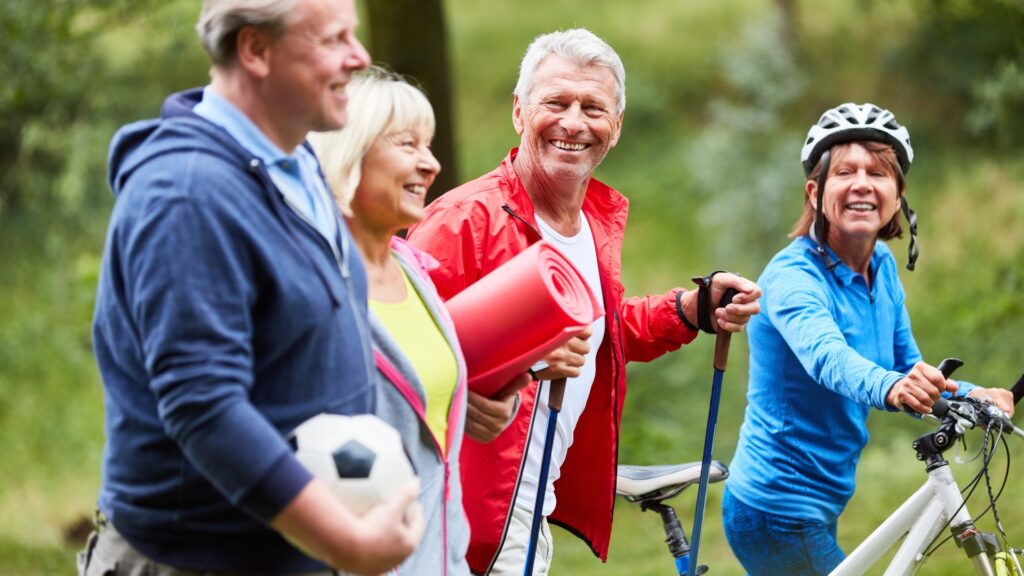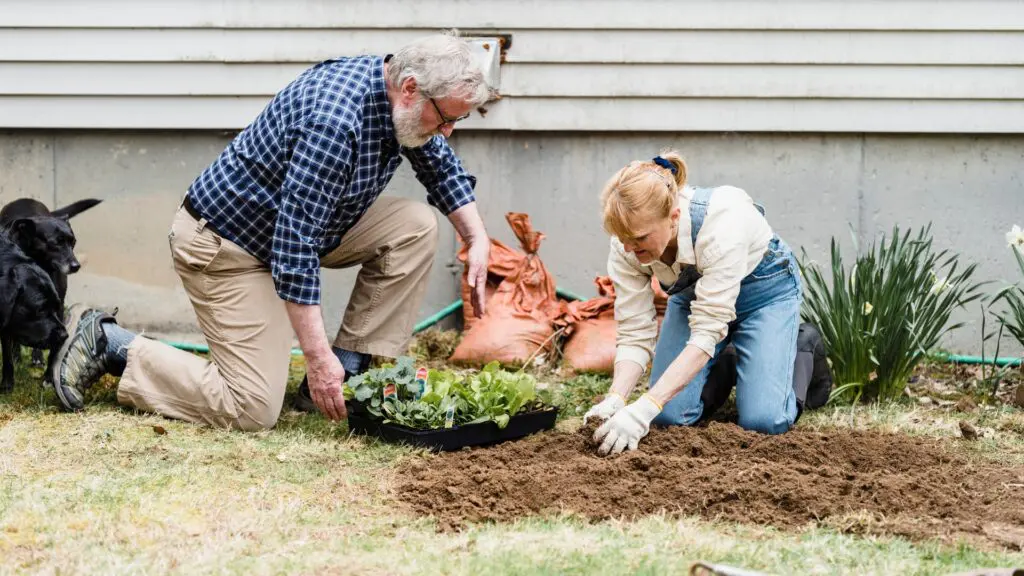
The Secret Of How To Improve Vitality As You Get Older
This weeks article is all about the one major way that you can maintain vitality as you get older. Depending on how well you have been keeping up with this to date, you might find that you end up having more vitality in the next 5 years than perhaps you’ve had in the recent decade or longer.
Over the years we’ve met some feeling tired, in pain and thinking it’s time to wind things down for retirement. After following this action for vitality, they’ve more energy and vigour than they’ve had in many years and are eagerly anticipating the years ahead, building their business success with renewed passion and energy! We’ve had others following this simple principle consistently make objective improvement in bone density at a time when many women in particular, resign themself to a “managed decline”.
Hopefully this will be a very positive and uplifting article, so let’s get into it!
What does vitality mean?
A quick google search of the definition of vitality gives the following:
“Vitality: The state of being strong and active; energy.”
Vitality can mean different things to different people, but we see in the Oxford Dictionary quote above, the definition in its truest form. You will start to see through this article how perfect this one strategy for enhancing your vitality is.
When you break down the definition of vitality you can see how the three core words are in order. We start out with the word strong. We can look at what happens with a lack of strength and why it is so important for the latter two. As we look at those further on in life than ourselves, we see that through inactivity there is the absence of strength, strength of the tissues, primarily the musculoskeletal system. Without appropriate strength in the body, we start to see the second main word is affected.
Our ability to remain active is inextricably linked to the attribute of strength, without this appropriate level of strength the ability to move around your own home, let alone further afield is going to be terribly impacted.
Taking this lack of strength and activity further, it is inevitable that the inability of the body to move itself around means that the capacity to generate energy as well as utilize energy becomes much diminished. At the end of this scale, we see an individual with a lack of strength and activity who barely has the energy to get out of bed.
Although this paints a gloomy picture, it is all so easily avoided, but breaking down the words to the seemingly ridiculous, helps us better understand the links between these three core tenets of vitality. You will also see now how addressing the first one first can create a positive feedback loop that can powerfully oppose the negative feedback loop we just described.
Strengthening Your Body As The Central Strategy To Boost Your Vitality
Muscle tissue mass and strength is the cornerstone for vitality in so much that it directly addresses that first component; “being strong”. How we go about this is important, and this is why we would recommend resistance training, this could be done at home or in a gym setting.
It is very clear that working out at the correct intensity, regularly, for 3 to 5 sessions a week is sufficient to make progress for the average person. To the degree you have not been doing this for many years, you will likely initially get away with a faster response to even 3 good sessions a week. However there is a word of caution.
In order to benefit properly from resistance training we must make sure we do it in a responsible manner.
Step 1: Focus on simple exercises executed well
Like anything, it is worth spending a little time learning how to do these things correctly. Strengthening does not need to be complex or intimidating. Beginning with simple movements that you’re already doing on a daily basis is a great option. For example, starting out with movements like squats. You’re already doing this movement every day when you get out of bed, or off any chair. Learning to do it technically well is important for your whole lower body: Your back, your hips, knees and ankles.
Practice these movements with instruction so you have a reference of good form. We recommend recording yourself as you do these, so you can judge your technique more objectively too, and see change over time!
There is no need to do convoluted and complex exercises at all. Once you have a foundational technical ability, you can move to step 2.
Step 2: Add resistance to meet the required intensity
Now you’ve mastered the technical skill of these simple exercises so you’re safe, you can begin to make them effective. Adding resistance by way of exercise bands or weights to reach an intensity that is sufficient to provide the stimulus for change within the body is our focus. This means working out in a way that challenges your muscles, close to their ability to maintain the movements, like the squat, competently.
It is common that working out at the right intensity, with the right resistances, will initially create some discomfort in the muscles. This is called delayed onset muscle soreness, and is something that occurs in the 24 hours following the exercise. It can be off putting but it is a good sign that you’re working out at the right intensity at first. Note that you will not continue to feel this muscle soreness after every session, your body will change, provided you follow step 3
Step 3: Consistency and progression over time
If you effectively execute the right simple exercises, with good technique, using the correct levels of resistance that are challenging enough to stimulate your body to change you’re almost there! The last part of this puzzle is to do the above consistently over the long term, that is 3 to 5 sessions a week. Over time you will find that the exercises become less challenging, this is as your body is transforming! Progression with a steady increase of the resistances used over the long term will help you continue to provide the stimulation for this transformation process that is taking pace within your body.
Being Active; Energy
Improving our strength allows our body to be carried about the place in an active manner, independently. At a very basic level, for some, the action of getting out of a chair is a struggle, this is primarily why we referenced the squats in the previous section – it is such a foundational exercise that is immediately applicable to every single one of us.
Maintaining a strong body over the long term will allow us to be active, and have energy. As your resistance workout intensity progresses your muscles undergo changes, but also other areas, your bones, joints, heart, lungs and more. The benefits of resistance exercises are manifold and should they be packaged as a “pill” they would sell out permanently!
As you do more your capacity increases, for example, if you could only do 5 good squats to begin with, and further down the line you can do 10, and then you’re able to do multiple sets of 10 reps with a 10 kilogram weight with the same great form, you have changed! This means what your body is capable of has changed too. The consequences of this are that the daily activities you wish to participate in become relatively less strenuous. You also have greater ability to expend more energy without becoming exhausted.
The more you do, the more you can do!
Devote some time each week to improving your vitality
There are 168 hours every single week, many of you reading this will already have a degree of vitality at this point, investing an incredibly small amount of time to improve your vitality by way of adding in resistance training is something we can all do.
Doing 3 to 5 sessions a week carries a time commitment that amounts to less than 0.03% of your week.
What a reward when done consistently over time! For many reasons as we age, we do find that certain natural processes do begin to work against us. However, with such a small time commitment, for such a great reward, it is difficult to pass up on this great opportunity. Granted there are many other things that one could do to reinforce this process further, through practices, nutrition etc. But at our core, having vitality is to be strong and active, with energy. Give yourself the opportunity to experience this, if you do it right, in the blink of an eye, you’ll find your body already reaping the rewards of this endeavor.
We know that many of our members, in addition to helping with their back pain and sciatica, are also experiencing this improvement in their vitality as an “additional benefit” from following the Back In Shape Program. This is because as we build vitality like this, we build resilience too, fundamentally the two are built together! If you feel like you could do with a bit more vitality then check out the link below and join the Back In Shape Membership.









Responses